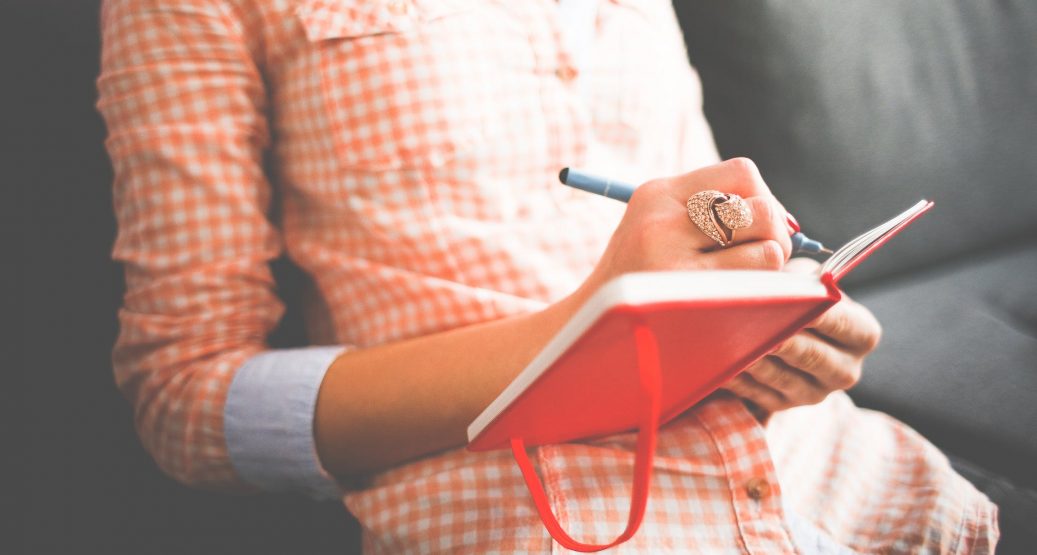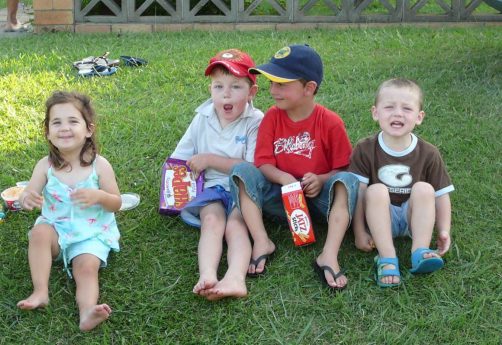
My favourite gratitude practices
Here I offer my five of my favourite gratitude practices. See if any of them resonate with you, and if so, give them a try. Like anything else in life, you won’t stick with a practice if you don’t enjoy it and feel some benefits. Once you find something you like, find a time and place in your schedule which suits your personal circumstances and energy levels. Then, give it a month and see if you, or your family and friends notice any difference 😊.
Gratitude Journal: Establish a daily practice in which you write down things you are grateful for. It can be a anything from three quick dot points to a paragraph or a page. Some suggest that having a special notebook and a set time to write things down can help you to remember and enjoy this practice. Your gratitude journal may include everyday things such as enjoying a cup of tea, a comfy chair, a car that starts every time (or most of the time), a job to go to, clean sheets; personal attributes such as your ability to cook a nice meal or help your mother navigate the latest technology; valued people in your life, friends, teachers; your health, waking up this morning; access to running water, a rainbow, chocolate.
Noticing new things you are grateful for every day, and being specific, can help gradually change the way we think and the way we perceive situations by shifting what we focus on. You may be grateful for your family every day, but if you compel yourself to write something new each time you mention them, you will be alert for fresh moments of appreciation. For example “My father stopped to pull out a few weeds as he walked down my driveway”, “Today my daughter took the time to take a scenic picture that she knows I would enjoy”. Some days you may not feel like writing in your journal, to this I suggest “go through the motions”. Researchers have found that thinking about and writing about gratitude will trigger the emotion. [1] [2] [3]

That’s one for the Gratitude Jar! Giving thanks and feeling grateful is free and brings light and colour to our days.
Gratitude Jar: A gratitude jar is a physical reminder of our blessings. This could be part of your daily gratitude practice – write what you are grateful for each day and place it in the jar, or you can use it on an ad hoc basis, as blessings arrive. In our family when something good happens I joyfully announce “That’s one for the gratitude jar!”, or, “Guess where that’s going?” so that one of my teenagers might reply, “The gratitude jar” and roll their eyes, but it makes these moments more meaningful and memorable. The contents of the jar can be reviewed on a special day such as birthdays, or Christmas, or simply to cheer us up when feeling down. [1] [2] [3]
Gratitude Letter: Select someone from your past who has made a difference in your life and to whom you have not fully expressed your thanks. Write a testimonial long enough to cover one laminated page – take your time, it may take weeks to compose. Meet with the person – don’t tell them the purpose of the visit in advance; a simple “I want to see you” will suffice. Bring your laminated page as a gift. When all settles down, read your testimonial aloud slowly, with expression and eye contact. Let the other person react. Reminisce together about the events that made this person so important to you. If writing a gratitude letter seems like too big a deal, start by writing post it notes to people, or thanking them in conversations. [4]
Gratitude at meals: Saying grace before meals, either in your head or out loud, taking a moment to offer sincere thanks for the food that’s before you… whether it be God, the earth, farmers, chefs, or all of the above. Perhaps share the day’s grateful moments around the dinner table and let your family know that you appreciate them. The conversations that follow may give you even more reasons to give thanks. [5]
Grateful endings: Barbara Fredrickson shares this practice in her book Positivity. “When I face an ending – little or big – I take stock of what good has happened in that location. If I’m leaving a person or group, this ritual often inspires me to express my appreciation aloud. If I’m simply leaving a place – even if it’s a hotel room on a work-related trip – I’ll silently thank that place for supporting me and whatever insights or experiences that occurred there. You’d be surprised how many times each day you face endings. If departures become your cue to give thanks, this ritual will leave you afloat in gratitude each day.”
A final word on gratitude As the primary obstacles to gratefulness are forgetfulness and a lack of awareness, reminders can serve as cues to trigger thoughts of gratitude. A note on the mirror or fridge, an alarm on your phone, a nudge to ask yourself ‘What am I grateful for in this moment?’ The more you practice gratitude, the more aware you become of how much there is to be thankful for, and the more you enjoy its benefits. Remember, it’s not happy people who are thankful, it’s thankful people who are happy 😊
[1] Kwik, Jim 2017 How Gratitude Rewires Your Brain. Read more here. [2] Emmons, Robert 2010 10 Ways to Become More Grateful. Read more here. [3] The Science Behind Gratitude (and How It Can Change Your Life) By Derrick Carpenter, MAPP. Read more here. [4] Seligman, Martin Phd. 2002, Authentic Happiness: Using the New Positive Psychology to Realise Your Potential for Lasting Fulfillment, Random House, Australia [5] Fredrickson, Barbara Phd. 2009 Positivity: Top-Notch Research Reveals the 3-to-1 Ratio That Will Change Your Life, MJF Books, New York

